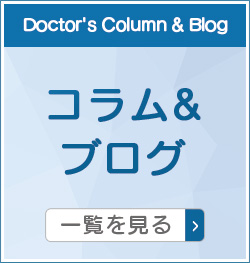昨年の3月にウィーンで開催された第1回の線維筋痛症の国際学会に参加してきましたが、残念なことに日本人医師は私一人でした。第2回の今年は、Covid-19パンデミックのため延期に加えてバーチャルでの開催となりました。
本日紹介する演題は、主に疾患活動性(疾患の重症度)評価指標と治療法についてです。
杉並国際クリニックでは、J-FIQ(日本語版FIQ)を採用して、線維筋痛症の患者さんの重症度や治療による改善度を評価しています。
線維筋痛症においては、特定の症状の改善ではなく、日常生活機能の改善が治療目標とされているので、J-FIQは有用です。
しかし、厄介なことに線維筋痛症の患者さんの中には、J-FIQスコアで明らかな改善が認められる場合であっても、治療による改善の満足度がなかなか向上しないことがあります。
ですから、演者がサマリーで記述している通り、治療目標は常に個々の患者さんと合意の上で、意思決定のプロセスを共有して設定すべき、という主張は妥当なものだと考えます。
治療戦略に関して
(1)教育とフィットネス、
(2)薬物療法、
(3)心理療法
を3本柱として提言されていますが、運動とフィットネスのみが「強く」推奨することに定められていることに注目すべきだと考え、今後も水氣道®を積極的に推進していきたいと思います。
Implications for Treatment, Disease Severity Assessment and Research
治療のための示唆、疾患の重症度評価と研究
Valeria Giorgi
(ヴァレリア・ジョルジ)
L. Sacco University Hospital, Italy
(L.サッコ大学病院、イタリア)
Summary
Disease severity assessment is an indispensable tool for every rheumatologist dealing with his or her patients. Indeed, it gives a snapshot of the current clinical situation of each patient, helping in the decision making about treatment, which could be more or less aggressive, depending on the disease severity scale; also, it allows to obtain a full picture of each patient’s clinical progression in time, permitting the creation of a strong and reliable system of follow-up. The disease severity assessment should be based on reliable, easy-to-perform standard measurements of meaningful clinical outcomes. A clear example in rheumatology can be represented by the DAS28 in rheumatoid arthritis. However, it is not possible to rely on a single symptom assessment in the case of fibromyalgia, as, for example, pain intensity, since it is a syndrome comprising too many clinical aspects. Therefore, various composite indeces were validated, encompassing the main features of this polysymptomatic disease, namely pain, fatigue, sleep alteration, neurocognitive disorders, anxiety and depression. The most widely used include the Fibromyalgia Impact Questionnaire (FIQ) and its revised version (FIQR), the Fibromyalgia Assessment Status (FAS), the Fibromyalgia Survey Criteria (FSC) and the Patient Health Questionnaire 15 (PHQ15). Notwithstanding, controversies are still open regarding the reliability and usefulness of these composite tests from an inter-individual perspective, i.e., consensual severity cut-off points have not been established yet, and this creates difficulties regarding not only therapeutic decision-making, but also invalidity recognition by healthcare authorities. Anyway, research is currently ongoing 1.
Disease severity assessment tools are useful, but therapeutic targets should always be set in agreement with each individual patient, in a shared decision-making process. In general, the improvement of everyday function, rather than the improvement of specific symptoms, could be considered a feasible therapeutic goal. From this perspective, treatment should be strictly individualized, combining both pharmacological and non-pharmacological tools, based on each patient’s needs and symptomatology. In fact, the latest EULAR criteria 2 established a “strong” recommendation only for exercise and fitness for fibromyalgia patients. In order to give general indications for physicians’ daily clinical practice, we can divide the treatment in 3 “pillars”: (1) Education and fitness; (2) Pharmacological treatment; (3) Psychotherapy. It is advisable to start each therapeutic plan with an element taken from each single pillar, in order to be effective in all symptomatologic domains.
New promising treatment tools are currently under investigation. From a pharmacological point of view, mirtazapine, an α2 adrenergic antagonist with serotonergic and noradrenergic effects, and milnacipran, a serotonin and norepinephrine reuptake inhibitor, were tested for their effectiveness in fibromyalgia, but results have so far been controversial 3,4. Conversely, cannabis plant seems to be a promising tool to fight fibromyalgia chronic pain 5,6, even though further studies are needed in order to assess the correct posology and THC/CBD ratio. On the other hand, nonpharmacological treatments that are being studied include the hyperbaric oxygen therapy 7,8 and neurostimulation 9, which, interestingly, are both able to act on neuroplasticity, which is particularly important in a disease such as fibromyalgia.
疾患重症度評価は、すべてのリウマチ専門医が自分の患者を診るために必要不可欠なツールである。
実際、重症度評価は各患者の現在の臨床状況のスナップショットを提供し、重症度に応じて積極的な治療を行うかどうかの意思決定に役立つ。重症度評価は、信頼性が高く、実行しやすい、意味のある臨床転帰の標準的な測定値に基づいて行われるべきである。
リウマチ学における明確な例は、関節リウマチにおけるDAS28に代表される。
しかし、線維筋痛症の場合には、あまりにも多くの臨床的側面を構成する症候群であるため、例えば痛みの強度のように、単一の症状評価に頼ることは不可能である。
そこで、この多症状性疾患の主な特徴である疼痛、疲労、睡眠変化、神経認知障害、不安、抑うつを網羅した様々な複合指標が検証された。
最も広く用いられているのは、線維筋痛症影響調査票(FIQ)とその改訂版(FIQR)、線維筋痛症評価状況調査票(FAS)、線維筋痛症調査基準(FSC)、患者健康調査票15(PHQ15)などである。
しかし、これらの複合検査の信頼性と有用性については、個人間の視点から見た場合、合意の上での重症度カットオフポイントが確立されていないことから、治療上の意思決定のみならず、医療機関による無効判定の難しさが指摘されており、議論の余地がある。いずれにしても、現在研究が進められている¹。
重症度評価ツールは有用であるが、治療目標は常に個々の患者さんと合意の上で、意思決定のプロセスを共有して設定すべきである。
一般的には、特定の症状の改善ではなく、日常生活機能の改善が治療目標として考えられる。
このような観点から、患者さんのニーズや症状に応じて、薬理学的手段と非薬理学的手段の両方を組み合わせて、厳密に個別化した治療を行う必要がある。
実際、最新のEULAR基準²では、線維筋痛症患者に対する運動とフィットネスのみを「強く」推奨することが定められた。医師の日常臨床での一般的な適応を示すためには、治療を3つの「柱」に分けることができる。
(1) 教育とフィットネス、
(2)薬物療法、
(3)心理療法。
すべての症状領域に効果を発揮するためには、各治療計画はそれぞれの柱からの要素から始めることが望ましいと考えられる。
現在、新しい有望な治療法が研究されている。
薬理学的な観点からは、セロトニンおよびノルアドレナリン作用を有するα2アドレナリン拮抗薬であるミルタザピン(飯嶋註:リフレックス®、レメロン®)、セロトニンおよびノルエピネフリン再取り込み阻害薬であるミルナシプラン(飯嶋註:トレドミン®)が線維筋痛症に対する有効性について試験されているが、その結果は今のところ議論の的になっている³-⁴。
逆に、大麻植物は、線維筋痛症の慢性疼痛⁵-⁶と戦うための有望なツールであると思われるが、さらなる研究は、正しい薬量学(投薬量判定学)とTHC/CBDの比率(註)を評価するために必要である。
一方、研究されている非薬理学的治療法は、高圧酸素療法⁷-⁸と神経刺激療法⁹が含まれている。
興味深いことに、両方とも線維筋痛症などの疾患で特に重要な神経可塑性に作用することができる。
(註)THC/CBD比
CBDとTHCは、いずれも大麻成分(カンナビノイド)ですが、両者には大きな違いがあります。両者の効果の違いや相乗効果、副作用、日本の法律の解釈についてなど、近年日本でも注目されています。そこで、しばしば両者を併用することがあり、その配合比率、すなわちTHC/CBD比が議論されています。結論から先に言えば、その比率は症状ごとに異なります。
さてTHCは劇的な精神活性作用 (「ハイ」になる作用) があることからマリファナの原料にもなっており、日本を含む多くの国で規制対象になっています。
一方で、CBDはTHCのような効果はもたらさず、日本でも規制対象にはなっていません。
WHO (世界保健機構) では、CBDが病気の諸症状への効果が実証・示唆されており、CBDに乱用の可能性や個人・公衆衛生上に問題が起こり得る危険性が確認されていないと認めています。
ただし、あくまでも「悪影響が確認されていない」という見解であり、絶対に安全であると保障しているわけではないので、注意が必要です。
References:
1. Salaffi, F., Di Carlo, M., Arcà, S. & Galeazzi, M. Categorisation of disease severity states in fibromyalgia: a first step to support decision-making in health care policy. Clin. Exp. Rheumatol. 36, 1074–1081 (2018).
2. Macfarlane, G. J. et al. EULAR revised recommendations for the management of fibromyalgia. Ann. Rheum. Dis. 76, 318–328 (2017).
3. Welsch, P., Bernardy, K., Derry, S., Moore, R. A. & Häuser, W. Mirtazapine for fibromyalgia in adults. Cochrane Database Syst. Rev. (2018) doi:10.1002/14651858.CD012708.pub2.
4. Pickering, G. et al. Milnacipran poorly modulates pain in patients suffering from fibromyalgia: a randomized double-blind controlled study. Drug Des. Devel. Ther. 12, 2485–2496 (2018).
5. Yassin, M., Oron, A. & Robinson, D. Effect of adding medical cannabis to analgesic treatment in patients with low back pain related to fibromyalgia: an observational cross-over single centre study. Clin. Exp. Rheumatol. 37 Suppl11, 13–20 (2019).
6. Habib, G. & Artul, S. Medical Cannabis for the Treatment of Fibromyalgia. J. Clin. Rheumatol. 24, 255–258 (2018).
7. Efrati, S. et al. Hyperbaric oxygen therapy can diminish fibromyalgia syndrome – Prospective clinical trial. PLoS One 10, (2015).
8. Atzeni, F. et al. Hyperbaric oxygen treatment of fibromyalgia: a prospective observational clinical study. Clin. Exp. Rheumatol. 37, 63–69 (2019).
9. Brighina, F. et al. Brain Modulation by Electric Currents in Fibromyalgia: A Structured Review on Non-invasive Approach With Transcranial Electrical Stimulation. Front. Hum. Neurosci. 11, 13–40 (2019).
ARCHIVE
- 2024年4月
- 2024年3月
- 2024年2月
- 2024年1月
- 2023年12月
- 2023年11月
- 2023年9月
- 2023年7月
- 2023年5月
- 2023年4月
- 2023年1月
- 2022年12月
- 2022年11月
- 2022年9月
- 2022年7月
- 2022年6月
- 2022年5月
- 2022年4月
- 2022年3月
- 2022年2月
- 2022年1月
- 2021年12月
- 2021年11月
- 2021年10月
- 2021年9月
- 2021年8月
- 2021年7月
- 2021年6月
- 2021年5月
- 2021年4月
- 2021年3月
- 2021年2月
- 2021年1月
- 2020年12月
- 2020年11月
- 2020年10月
- 2020年9月
- 2020年8月
- 2020年7月
- 2020年6月
- 2020年5月
- 2020年4月
- 2020年3月
- 2020年2月
- 2020年1月
- 2019年12月
- 2019年11月
- 2019年10月
- 2019年9月
- 2019年8月
- 2019年7月
- 2019年6月
- 2019年5月
- 2019年4月
- 2019年3月
- 2019年2月
- 2019年1月
- 2018年12月
- 2018年11月
- 2018年10月
- 2018年9月
- 2018年8月
- 2018年7月
- 2018年6月
- 2018年5月
- 2018年4月
- 2018年3月
- 2018年2月
- 2018年1月
- 2017年12月
- 2017年11月
- 2017年10月
- 2017年9月
- 2017年8月
- 2017年7月
- 2017年6月
- 2017年5月
- 2017年4月
- 2017年3月
- 2017年2月
- 2017年1月
- 2016年12月
- 2016年11月
- 2016年10月
- 2016年9月
- 2016年8月
- 2016年7月
- 2016年6月
- 2016年5月
- 2016年4月
- 2016年3月
- 2016年2月
- 2016年1月
- 2015年12月













